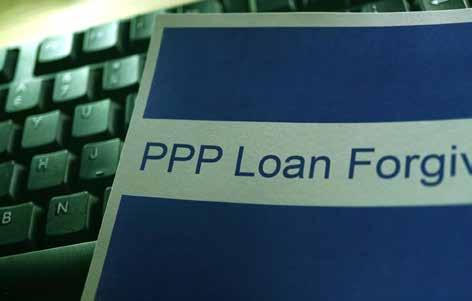BOTTOM LINE
PPP loan forgiveness How to ask for it and what to expect
T
he Consolidated Appropriations Act, 2021 (the additional COVID-19 pandemic relief package), passed on 12/27/2020, extended the Paycheck Protection Program (PPP) loan application period to 3/31/2021 (including the PPP second draw loan, which opened 1/11, 2021). Then on 3/31/2021, through the PPP Extension Act of 2021, the PPP loan application period was extended to 5/31/2021. But what does forgiveness actually look like? The Small Business Association (SBA) released three different forgiveness applications but, thus far, little indication of when we will know if any loans will actually be forgiven and, if so, when. As a business owner, I can attest that it’s hard to make business decisions with those questions looming overhead. And as a tax manager, I feel your frustration too. What we do know If you received a PPP loan, you can apply for loan forgiveness through your lender by using SBA Form 3508, 3508EZ or 3508S. Currently, you have 10 months from the close of your covered period to file for forgiveness. All payments of principal and interest are deferred until the SBA processes your forgiveness application. Forms and covered periods Which of the three forms you use is dependent on how much your loan was for. If you received a loan of $150,000 or less, you can prepare Form 3508S and avoid completing the reduction in forgiveness related to: a) the full-time equivalent employee calculation, and b) the reduction in salaries and wages calculation. If you received a loan of more than $150,000 and fall within one of two categories on Form 3508EZ’s instructions, then you can and should prepare this simplified form. If you do not qualify to use either of those forms, then you must prepare the detailed Form 3508. Your PPP loan’s covered period begins on the date you received the loan proceeds and ends between a minimum of 8 weeks and a maximum of 24 weeks, in which you must have spent the funds on eligible costs.
4 categories of eligible costs Cash compensation related to payroll costs:
Cash compensation may not exceed $100,000, as prorated for the covered period ($15,385 for 8 weeks and $46,154 for 24 weeks). For anyone who is an owner-employee, self-employed individual, or general partner, their cash
compensation amount is limited to the lower of these two options: either $20,833 (the 2.5-month equivalent of $100,000/year), or the 2.5-month equivalent of either their 2019 or 2020 compensation, depending on which year was used to calculate the loan amount. Noncash compensation:
(does not go against the cash compensation limit per employee) ■ Employer contributions for employee health insurance ■ Employer contributions to employee retirement plans ■ Employer state & local taxes paid based on employee compensation (e.g., state unemployment insurance) Nonpayroll costs for obligations incurred prior to 2/15/2020:* ■ ■ ■
Business mortgage interest Business rent and lease payments Covered utilities (electric, gas, water, telephone, transportation, internet access) *Eligible nonpayroll costs cannot exceed 40% of the total forgiveness amount.
Other eligible costs:
(as revised under Consolidated Appropriations Act, 2021) ■ Covered operations expenditures ■ Covered property damage costs ■ Covered supplier costs ■ Covered worker protection expenditures Once you have the loan forgiveness application completed, submit it to your lender based on their processing requirements. Then after your lender completes their review, they will send it to the SBA for final forgiveness approval. Consult your tax advisor and lender for assistance in addressing your specific application.
MICHELLE MARLER is a partner at The Works Remodeling and Finishing with 10 years of experience in the construction trade. Additionally, she puts her 16 years of tax experience to work as a tax manager at Abeles and Hoffman. WeDoTheWorks.net and AHCPA.com
Follow this issue at: home.treasury.gov/policy-issues/cares/assistance-for-small-businesses
Mar/Apr 2021 | inPAINT
39



